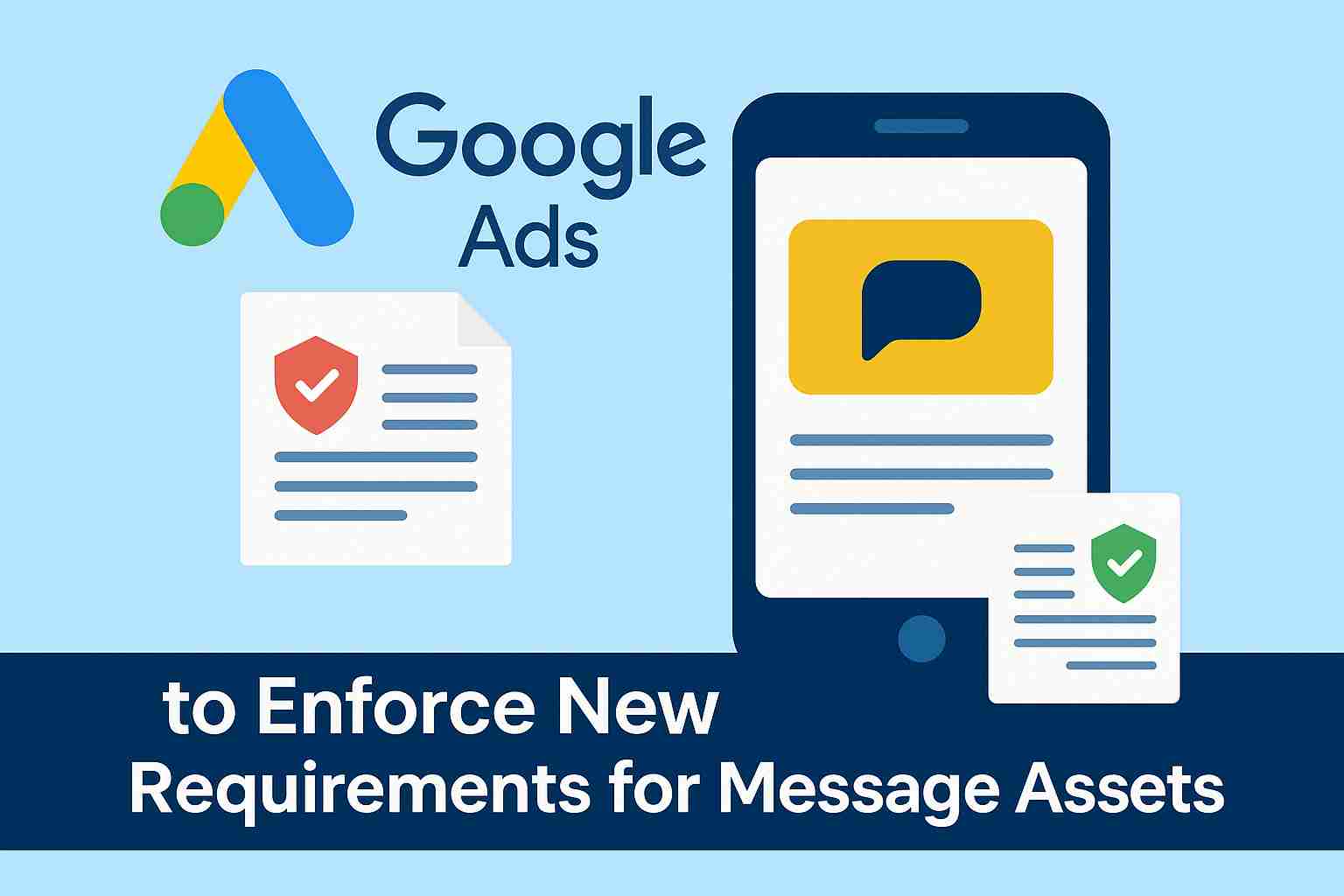Have you noticed how often the Google Ads platform seems to change its criteria? That is the beauty about doing the campaigns: advertising norms keep changing perpetually and if you are jobbing as an advertiser, information about the proceedings is simply not a matter of choice- it’s outright survival. Google Ads have announced new requirements relating to Message assets, which will further change the way advertisers engage with their customers. So, what is changing, and how can one prepare for it? Let’s break it down.
What do you mean by Message assets in Google Ads?
The message exile is a little extension that allows prospective customers to send messages to a business directly from a search ad. That is “Message” as opposed to a clickthrough to the Web site. Quite handy, isn’t it? Well, Google agrees with that premise, but the less hassle gives greater responsibility; hence the implementation of new rules.
Why has it come to this point where Google Ads has to enforce new requirements?
That is the greater question. To briefly sum it up: user trust and ad transparency. In the past few months, Google has tightened its policies against ads to make sure those advertising are genuine, legitimate, and meet some sort of compliance criteria. These changes are to protect the businesses and the buying public since fake accounts, misleading offers, and transparency issues have skepticed some users in engaging directly through the ads.
A digital strategist, in other words, said that “Trust is the new currency of PPC. If users do not trust an ad, under no circumstance will they click on it; even if the targeting is 100 percent accurate.”
What do advertisers need to really follow?
The specifics start here: Now advertisers must even be more accurate about who they are, how they hold messages from these businesses, and, in some instances, need to have certain business data verified. Think of it as Google saying, “prove that you have a real business before we let people text you.” This is all very much tied to advertiser compliance measures already in place across ad formats.
If there is anything else you want to learn about recent Google Ads policy changes, feel free to go to our Generative Engine Optimization guide, explaining how search platforms are fast evolving and why compliance even matters in the first place.
So, will this change anything about your PPC strategy?
For a few advertisers, nothing should change. If you have been transparent from the beginning and have always been going by the rules, you can go on with your business. For those who have always messed with the rules, getting disapproval or restriction of ads shall be their new companion.
Basically:
Ad extensions will not be served (including messages) if you do not qualify.
You will have to adjust your PPC campaign in order to align with these stricter Google policies.
Customer engagement loss can be experienced if you are too slow to adapt.
Before, compliance was more of a “would be nice” thing to have; it is very much something you have to deal with nowadays if you want to reach out completely and be effective with your Google Ads.
So what should marketers do now?
Don’t panic; don’t ignore it, either. Look over your Message assets to make sure they can safely operate under the new regulations. Check that business hours are still respected and the customer service numbers or reps indeed respond. Do a mini-audit before the folks at Google go through theirs. If you’re still a bit unsure, maybe you should have a look at our articles on On-Page vs Off-Page SEO since compliance boils down to trust-building throughout one’s digital presence and not around ads alone.
A regulation is not a roadblock; it is a roadmap, says marketing consultant Priya Deshmukh. The faster you adapt, the higher your gains.
FAQs
1. Starting when do the new laws for Google Ads Message asset take effect?
Never a long runway for Google: they are gradually rolling out the updates, so it makes sense to prepare now.
2. Do these concern all advertisers?
Absolutely, any and all who are using Message assets in their campaigns will be required to abide by it.
3. What happens if I ignore these rules?
Your Message assets might get disapproved, which makes your ads less effective.
4. Part of a bigger Google Ads policy update?
Yes, it’s all in an attempt by Google to bring about ad transparency and compliance of the advertiser.
5. How can small businesses adapt to this easiest?
Keeping your information accurate, responding to customer queries immediately, and checking the audit of all ads ought to do the trick.
Conclusion
Google Ads‘ new Message assets requirements might just be throwing yet another wrench into an already-ever-moving marketing environment. Stay updated and transparent but most importantly must mean compliance with these changes, which in turn ensures one uses the changes for his advantage rather than against him. What do you think? Are these updates helpful, or are they just another headache from Google?
